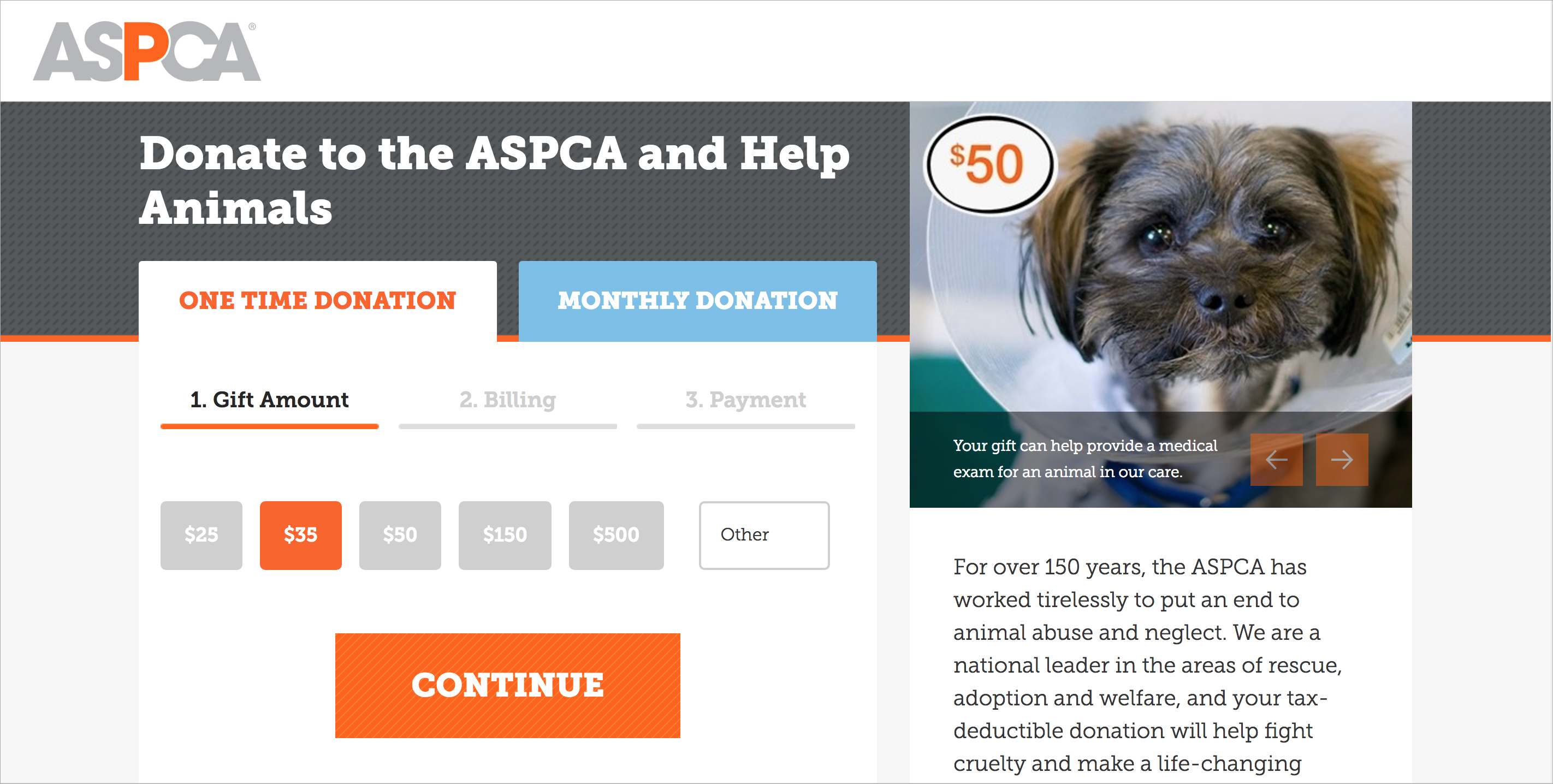How to Choose the Right Channels for an End-of-Year Fundraising Campaign
You’re working hard to spread your nonprofit’s mission. Even more so at the end of the year, when fundraising is most vital to help support that mission. If you already have an end-of-year strategy outlined and a great concept ideated, it’s now time to figure out the most effective channels for delivering your message.
Since end-of-year competition is high, you need a strong message and even stronger delivery to reach your audience. So what’s the perfect recipe for your EOY multi-channel mix?
At a minimum, it’s in your best interest to utilize all of these channels for your end-of-year campaign:
- Website
- Donation form
- Direct mail
- Social media
And if budget and resources allow, consider these channel contenders:
- Digital advertising
- Broadcast/Out of home
How can you maximize these channels for the best results? Let’s dive deeper.
How many end-of-year emails do you think you need to send? Prepare yourself, the answer might shock you.
That number might seem high, but the more emails you send, the more successful you’re likely to be. (source, source) And while you may notice some unsubscribers, they’ll be outweighed by additional donations. People understand and expect nonprofits to ask for donations during this time of the year. If a person unsubscribes, it’s likely they weren’t very invested with your nonprofit to begin with.
Multi-Email Execution
Since email is one of the best channels to reach potential donors during this time of year, a multi-email plan is a solid foundation for your strategy. It’s imperative to stay top of mind since your organization will need to cut through competition and cluttered inboxes to reach potential donors.
Begin your email campaign with Giving Tuesday and continue all the way through December 31st. Send the first couple of emails as part of a Giving Tuesday push, followed with about an email a week until the last few days of the year. From December 29-31, send at least 3 emails. 10% of ALL giving in the U.S. is made those last three days of the year and you want to stay top of mind during that time.
Make every email count with meaningful content and a strong call to action to donate. Also, reflect on what was successful and unsuccessful in previous years.
While you don’t want to go off-brand and off-message, don’t be afraid to test. Consider trying different image placement, subject lines, or animated gifs.
Website
Your website should reflect your end-of-year campaign in many ways. Think of it as an arm of your nonprofit instead of the appendix (works great until it bursts). This is especially important if you are directing donors to donate through your site.
At a minimum, a homepage banner should be created for your EOY campaign. As the first thing visitors see on your website, it’s the best way to catch their eye. You can even take the homepage banner a step further with an entire homepage takeover. For charity: water, their full homepage changed to reflect the holiday season (note that a “donate” button is still at the forefront in each website design). Here’s a version of the charity: water homepage during the majority of the year.

And here’s their homepage during one end-of-year season. Charity: water has opted for a homepage takeover. Instead of a banner at the top of the homepage, the entire homepage displays their EOY message and graphics.

Another feature for your website could be a lightbox. Yes, lightboxes (also known as pop-ups) have a bad rep. But, there is proof that they do work. The key for lightbox success is to keep it simple with one strong call to action.
Don’t forget to add appeal graphics on other key parts of your site, such as the Impact or About page, to keep your EOY campaign present throughout the website.
Donation Form
Nothing is more frustrating for users than a confusing donation form or one that doesn’t work as it should. Do you need to make any upgrades or modifications to your donation form before end of year? If so, the sooner the better, as you will need plenty of time to update and ensure the donation form is functioning properly. As you’re considering updates, here are a few other donation form tips:
Responsive is Key
A responsive website is important in general, but especially imperative if your campaign directs potential donors to donate online. Don’t forget – people are often visiting your website on their phones! At a minimum, if your website isn’t responsive, your donation page should be.
And, make sure your donation page reflects your EOY campaign, so people will know they’ve landed in the right spot.
Monthly Donations Stay Top of Mind
While one-time donations are important, think about how you can motivate donors to make monthly donations. Do you offer recurring donations in a clear and easy way? This could be the time to turn one-time donors into recurring donors. Here’s an example of a donation form with a monthly donation option included. The monthly ask stays top of mind as a static tab throughout the entire donation journey, clearly but subtly reminding donors that they can make their gift recurring.

Thank You Pages Matter
Your thank you page is just as important as your campaign. You want to properly acknowledge your donors’ generosity. The page should be celebratory and invite your donors to continue onto other relevant pages of your site.
Thoughts on fundraising delivered to your inbox
Make your thank you page more than just a “thank you.” Consider using the page to gather important information about your donors. Since donors feel best right after the give, they’re more likely to take a moment to answer a few questions. Consider asking segmentation questions like what prompted them to give, what programs they care most about, demographic info, etc. You can then use this segmentation for better targeting in next year’s campaign.
Direct Mail
Although direct mail is the most costly communication channel, it’s still important for an end-of-year campaign.
Similar to emails, your direct mail piece will need to stand out from the competition and clutter. What works for your nonprofit? Do you send letters like most nonprofits? Are they working for you? If what you’re doing is working, keep doing it! But if you’re seeing your direct mail response dropping, consider alternatives to the letter like pseudo holiday cards. Here’s an example of a non-traditional direct mail piece we created for Habitat for Humanity:

Direct Mail Considerations
- A huge portion of end-of-year donations still come via mail – over 80%.
- Time your direct mail appropriately to arrive in the second week of December.
- If you’re looking for a way to save money, consider only sending direct mail to those who respond via direct mail. Those that typically give online would not receive a full direct mail appeal or might only receive a postcard.
- Send a smaller appeal to ongoing existing donors instead of a large direct mailer to test results.
- If budget allows and your direct mail response is strong, consider sending multiple mailers.
Social Media
The social media landscape is a competitive one, therefore you must pay to play. On average, a nonprofit will reach just 8% of its fans with a post that isn’t promoted. (source)
Social Media Tips
While there isn’t a “wrong” way to promote on social media, there are a few keys to maximize success.
During this time, you’ll want to continue to curate other content in addition to your fundraising posts. While it’s important to highlight the EOY campaign, don’t overwhelm your social accounts with fundraising requests. And with more content to publish, schedule your posts for different times, 7 days a week. This will allow you to test when followers engage most.
For post content, focus on mission success and your supporters. Sharing authentic victories is the best way to create storytelling that feels great and is easy to share. Also consider tapping into any urgent or topical public awareness news that is relevant to your mission.
An important tip to remember: Now is not the time to introduce a new social media channel. It’ll be difficult to build a strong enough channel following in such a short period of time to truly be effective.
A word on peer-to-peer fundraising: If you’re looking for a way to begin incorporating peer-to-peer fundraising into your org, social media is an easy way to get started. Specifically, Facebook Fundraisers now allows for individual fundraising via Facebook and anyone can start a fundraiser. It’s the perfect opportunity to get board members, volunteers and other supporters involved to help raise money at this important time of year.
YouTube is also focusing on nonprofit donations with donation cards. Donation cards are little ads that pop-up during YouTube videos. During the video, the sidebar ad will pop up so viewers are able to donate immediately to the nonprofit through YouTube. Bonus: Currently YouTube does not charge a fee for this service!
Here’s an example of a donation card on YouTube:

Online Advertising
Online advertising is a fountain of untapped opportunity, especially as technology and demographic information improves each year. And while digital advertising isn’t foundational for your communication mix, end of year is a good time to test it out. The three most common types of end-of-year online advertising are:
Search Ads
Search ads (also called “pay-per-click ads”) are paid online text advertising. They appear as the paid results at the top of internet searches. If your nonprofit organization utilizes Google Ad Grants, those are search ads. During your end-of-year campaign, these ads can be used to solicit donations.
Image Ads
Image ads are paid online image advertising (also called “banner ads”). You can select geographic areas or demographics to target based on past searches to increase your rate of success.
Retargeting Ads
Retargeting ads target those who have already visited your site but have not taken action. In the example below, I viewed the The Humane Society’s website and later an ad for The Humane Society appeared while browsing the website of a local news outlet. Because viewers have already shown interest in your organization by visiting your website previously, retargeting often produces better results than other image ads. For your end-of-year campaign, you’ll want the ads to point back to your donation page or you may make a special landing page just for them.

Broadcast/Out of Home
For larger organizations, this can be worth the investment since these channels aren’t as common. Broadcast generally consists of TV and radio, while out of home is billboards, bus wraps, etc. For end-of-year campaigns, these are best used as awareness builders, getting people thinking of your organization as you build up to your end-of-year ask. Any broadcast or out of home advertising should launch earlier than typical campaigns, in September or October.
Keep in mind that it’s traditionally harder to track results with these channels, but tracking continues to improve as the use of streaming services increases (YouTube, Spotify, Pandora, etc.).
Like with any recipe, adjust and modify our suggested mix to fit your organization’s strategy and needs. Turning your end-of-year message into action is no easy feat, but with the right communication channels you can find greater success this year end.



